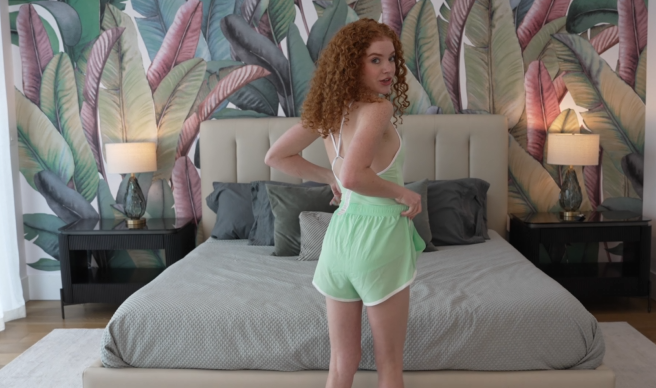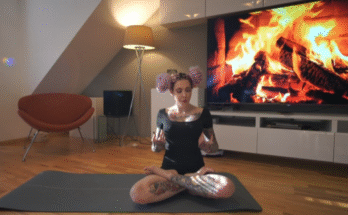
The Yogi Squat—also known in Sanskrit as Malasana—is a deceptively simple yet powerful pose found in many yoga practices, especially those rooted in grounding, mobility, and balance. It may look like just a squat at first glance, but Yogi Squat is far more than a posture for resting low to the ground. This pose builds flexibility, strength, and connection between the mind and body. Whether you’re a beginner or a seasoned practitioner, incorporating Yogi Squat into your daily flow can offer transformative physical and emotional benefits.
What Is Yogi Squat (Malasana)?
The Yogi Squat is a low, deep squat where the feet are flat on the ground, and the hips drop below the knees. The palms come together in front of the chest in a prayer position (Anjali Mudra), and the elbows gently press into the inner knees to open the hips. The spine remains long and active, not rounded. This posture looks different for everyone based on anatomy, flexibility, and mobility—but at its core, it is a posture of surrender, strength, and openness.

How to Perform Yogi Squat
Here’s a step-by-step guide for performing Yogi Squat correctly:
- Start in a standing position (Tadasana). Keep your feet hip-width apart.
- Turn your toes slightly out, about 30–45 degrees depending on your natural hip alignment.
- Bend your knees deeply and lower your hips toward the ground into a squat.
- Bring your palms together in front of your chest (Anjali Mudra), and press your elbows gently into your inner knees to help open the hips.
- Engage your core, lengthen your spine, and lift your chest. Avoid rounding your back or collapsing forward.
- Hold the pose for 5 to 10 breaths, or longer if it feels comfortable.
If your heels lift off the floor, it’s perfectly okay! You can place a folded blanket or a yoga wedge under your heels for support.
Physical Benefits of Yogi Squat
- Hip Opener: One of the main reasons Yogi Squat is so effective is its ability to stretch the inner thighs, groin, and hips. For people who spend most of their time sitting at desks, this pose counteracts the stiffness and tightness in the hip area.
- Ankle and Calf Flexibility: Holding this position helps stretch and strengthen the ankles and calves, which are often neglected in other forms of exercise.
- Improves Posture: By encouraging a long spine and engaged core, Malasana supports better posture habits off the mat.
- Digestive Aid: The squatting position gently massages the digestive organs, which can help stimulate digestion and alleviate bloating.
- Strengthens Legs and Lower Back: While the posture seems passive, holding it for an extended time builds endurance and stability in the legs, glutes, and lower back.

Emotional and Energetic Benefits
Malasana is not just a physical posture—it’s also deeply connected to our energetic body, especially the Root Chakra (Muladhara). This chakra is located at the base of the spine and is associated with feelings of safety, security, and stability.
Spending time in Yogi Squat can help you feel grounded, connected to the earth, and more centered in your thoughts. It’s often used as a posture to release emotional tension stored in the hips—a common place for holding unprocessed stress and anxiety.
Modifications and Props
Like many yoga poses, Yogi Squat can be modified to suit different bodies and levels of mobility. Here are a few ways to make the pose more accessible:
- Use a block or bolster: If dropping low is too intense, sit on a block or bolster placed under your sit bones. This can make the posture more restful.
- Support the heels: Use a rolled blanket or wedge under your heels if they lift off the mat.
- Wall support: Practice near a wall for balance if you feel unsteady in the squat.
For those with knee or hip injuries, consult a medical professional or yoga therapist before practicing Malasana regularly.

Integrating Yogi Squat into Your Practice
Yogi Squat can be a pose on its own, a warm-up, or even a transition posture in a Vinyasa flow. It’s especially useful before deep hip openers like Pigeon Pose or forward folds. You can also use it as a resting posture between stronger standing poses.
Here are some yoga flows where Yogi Squat fits beautifully:
- Hip-opening sequences
- Prenatal yoga routines
- Root chakra grounding practices
- Morning stretches to wake up the spine and hips
- Post-run or post-cycling cool-downs
Even just holding Yogi Squat for 2–3 minutes a day can lead to noticeable improvement in flexibility, alignment, and inner calm.
Cultural Connection: Squatting as a Natural Human Movement
In many parts of the world—especially in Asia and Africa—squatting is still a natural part of everyday life. People eat, rest, work, and socialize in this position. In contrast, many Western cultures have moved away from natural movement patterns due to furniture and sedentary habits.
Reintroducing squatting (with awareness and breath, as in Yogi Squat) is like reclaiming a birthright—restoring mobility and grounding that the body remembers, even if the modern lifestyle has masked it.

Common Mistakes to Watch For
- Heels lifting off the ground: This may indicate tight calves or ankles. Use support under the heels.
- Rounded spine: Make sure to lift the chest and engage the core.
- Collapsing into the knees: Keep your knees pressing outward gently, in the same direction as your toes.
- Forcing the hips down: Always move within your range. Forcing the squat can hurt the knees and hips.
Yogi Squat Challenge: 7 Days to Open Hips
Want to feel the power of Malasana for yourself? Try this simple challenge:
- Day 1-2: Hold Yogi Squat for 1 minute
- Day 3-4: Increase to 2 minutes
- Day 5-6: Add gentle twists or side stretches while in the pose
- Day 7: Hold for 3–5 minutes with breath awareness and no distractions
By the end of the week, you’ll likely feel more grounded, flexible, and connected to your lower body.

Final Thoughts
The Yogi Squat is a beautiful example of how a simple posture can unlock deep physical, mental, and emotional healing. It invites you to surrender, stay present, and reconnect with your body’s natural rhythms. Whether you’re working on your mobility, deepening your yoga practice, or just needing a mindful moment in the middle of a busy day, Malasana offers a place to root, reflect, and release.
So next time you roll out your mat, don’t overlook this humble squat. Sit low, breathe deep, and let yourself feel the earth beneath you. You might be surprised at what opens up—both in your hips and your heart.


